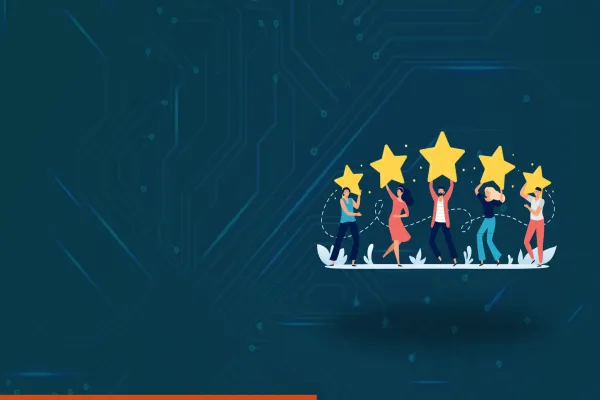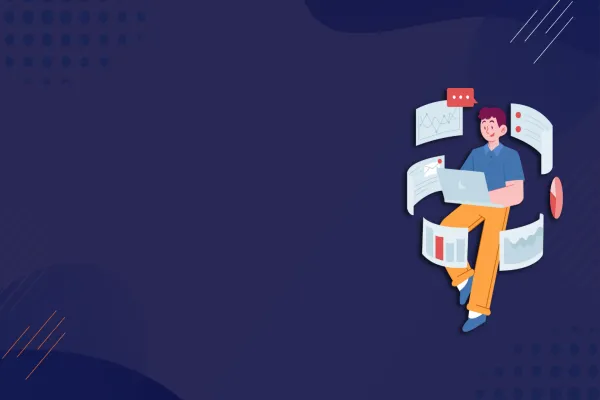In a hyper-competitive world, customer experience (CX) is not just a buzzword- it’s a key differentiator and a critical business driver. With companies striving to capture a chunk of market share, CX remains at the core; but what’s more important is the return on investment or ROI of customer experience.
From putting more revenue into fostering customer loyalty to enhancing CX- this investment is undeniable across all competitors in different industries. For organizations that are looking to make a data-driven decision it is essential to understand the common connection between CX and ROI of customer experience.
In this article, we take a deep insight into the ROI of investing in customer experience by diving into key statistics and data from Forrester, PwC, and McKinsey. In coming sections, we will explore how improving revenue growth and customer retention can be a direct impact of investing in CX.
Customer Experience Improvement: The Financial Impact

Forrester's 2022 report on "How Customer Experience Drives Business Growth" highlights the significant financial upside of improving customer experience. For example, it shows how improving CX by just one point for mass market auto manufacturers can generate more than $1 billion in additional revenue. This example clearly demonstrates the relationship between CX and revenue growth across industries.
We cannot ignore the ROI of customer experience in industries like hospitality and financial services as well. The exponential growth can go from "good" to "excellent” across these industries simply by investing more enhances customer experiences.
In the hotel sector, an improvement in CX leads to increased customer loyalty, with repeat bookings significantly contributing to the bottom line. This reinforces that ROI of investing in customer experience can result in consistent, long-term revenue generation.
The Hidden ROI of CX is Loyalty and Retention
While the ROI of customer experience may remain a perplexing topic for many organizations, they must not forget that the direct benefit of this could be customer loyalty and retention.
According to PwC’s Customer Loyalty Executive Survey 2023, 63% of executives increased their loyalty budgets in the last planning cycle, with investments averaging 5% of total revenue. This reinstates the belief that it is more cost-effective to retail loyal customers than to acquire new ones.
Data suggests that improving CX reduces churn, which, according to McKinsey, helps companies retain existing customers without the need to acquire new ones to maintain revenue levels.
Forrester also points out that the growth benefits of improving CX are amplified when making satisfied customers even happier, rather than solely focusing on placating dissatisfied ones. Organizations that remain customer-centric know that prioritizing long-term relationships with their most satisfied clients fetch them higher financial returns as compared to the ones that only address complaints.
Breaking Down the ROI of Customer Experience
Improving customer experience provides tangible, measurable financial benefits. Below are key areas where enhancing CX leads to significant ROI:

Increased Customer Retention and Loyalty
For many industries, customer retention is a more efficient revenue driver than new customer acquisition. The cost of acquiring a new customer can be up to five times higher than retaining an existing one. A focus on CX can foster loyalty, ensuring repeat purchases and increased lifetime value (LTV) of customers. For instance, McKinsey reports that 80% of value creation for the most successful companies comes from nurturing their core business—existing customers.
Improving CX at critical touchpoints—like post-purchase support or personalized communication—significantly reduces churn. By providing a seamless experience, companies can secure long-term relationships and increase net revenue retention (NRR), which directly translates into financial gain.
Revenue Growth Through Positive Experiences
A well-designed customer experience increases the likelihood of repeat purchases and encourages brand advocacy. According to Forrester, industries like auto manufacturing and retail see substantial revenue gains by improving their CX index scores. For example, customers who have a positive experience are more likely to return to the same brand for future purchases and services, creating a virtuous cycle of brand loyalty and additional revenue streams.
Moreover, upscale hotels and financial services see higher customer lifetime value when they prioritize moving customers from “good” to “excellent” experiences. As satisfaction grows, so does customers’ willingness to spend more or stay loyal, further enhancing ROI.
Customer Advocacy: An Underestimated Value Driver
While acquiring customers via recommendations contributes to less than 7% of the overall business benefit from improved CX (Forrester), word-of-mouth still plays a role in revenue growth. Satisfied customers are more likely to become brand advocates, sharing their positive experiences with others. This effect, while smaller than retention, adds incremental value that cannot be ignored.
Loyal customers not only spend more, but they also spread the word about their experiences, acting as unofficial brand ambassadors. This advocacy can lead to organic customer acquisition, reducing marketing costs and improving overall brand reputation.
Breaking Misconceptions About Customer Loyalty
Even while it is clear that improving CX can drive several benefits, many companies misunderstand the factors that can truly drive customer loyalty. PwC’s research reveals that executives often overestimate how much factors like customer service and personalized experiences influence loyalty, while underestimating the importance of product quality. Nearly half of consumers cite product quality as the top factor driving loyalty, with customer service coming in as a secondary consideration.
Understanding these nuances can help businesses allocate their resources more effectively. By aligning loyalty strategies with what consumers truly value, companies can better optimize their CX investments and maximize their ROI of customer experience.
Prioritizing ROI of Customer Experience

Why should you even do that? If you’re still not convinced, we give you other reasons; but the key denominator is- long-term growth. Building a strong strategy for customer experience (CX) improvement requires a clear understanding of what your customers expect.
McKinsey’s concept of "experience-led growth" illustrates that companies focused on enhancing CX can achieve double the growth of their competitors. By improving experiences for existing customers, companies can unlock additional revenue opportunities without the added cost of aggressive new customer acquisition campaigns.
Hence, it makes it evident that the ROI of customer experience is also about doubling the growth and ensuring that it is long-term.
Summary:
The ROI of customer experience is clear: companies that prioritize and invest in improving customer interactions see higher revenue growth, increased customer retention, and enhanced loyalty.
By focusing on the most impactful drivers of satisfaction—such as product quality and seamless experiences—businesses can ensure a consistent return on their CX investments, fostering long-term success. For companies looking to thrive in a competitive landscape, investing in customer experience is no longer optional—it’s essential.
At Valuebound, we help you maximize the ROI of customer experience with automation. Unlock strategies to automate interactions, enhance satisfaction, and drive revenue growth today!
FAQs
1. What is the ROI of customer experience?
The ROI of customer experience refers to the financial return companies gain from improving their customer interactions. This can include increased revenue, higher customer retention rates, and greater brand loyalty, all contributing to long-term profitability.
2. How does improving CX lead to increased revenue?
Improving CX increases customer satisfaction, which leads to repeat purchases, higher lifetime value, and word-of-mouth referrals. For industries like auto manufacturing and hospitality, even a small improvement in CX can generate significant additional revenue.
3. Why is customer retention important for ROI?
Retaining existing customers is more cost-effective than acquiring new ones. Satisfied customers tend to stay loyal, making repeat purchases, which boosts long-term revenue without the need for heavy marketing investments.
4. What role does customer advocacy play in CX ROI?
Customer advocacy, while a smaller factor compared to retention, still contributes to ROI by creating organic customer acquisition through positive word-of-mouth. This reduces marketing costs and helps attract new customers.
5. How can businesses measure the ROI of their CX efforts?
Businesses can measure CX ROI through key metrics like customer lifetime value (LTV), net promoter score (NPS), customer retention rates, and net revenue retention (NRR). Tracking improvements in these areas can help quantify the financial impact of CX investments.





